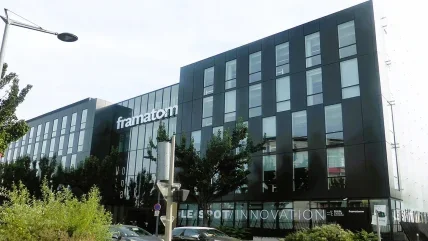
People often say that in their business, there is no room for error. When talking about the operations at Framatome’s Pump & Motor Service Center in Lynchburg, Virginia, USA, that phrase has never been more accurate.
Framatome, an international leader in the nuclear energy market, prepares components for the motors used to power nuclear reactor cooling pumps. The pumps help move coolant around the primary circuit of a nuclear reactor for heat transfer and to prevent overheating of the core. And, while the motor service centre provides a range of repair services to the nuclear industry, it is the refurbishment and maintenance of coolant pump motor components that represents the lion’s share of the shop’s business. Framatome has refurbished in excess of 130 reactor coolant motors for the US nuclear fleet and countless more globally.
The reactor coolant pump set is one of the most highly radioactive components in a nuclear plant. Since the motors which drive those pumps are also located in the same vicinity, they are also subject to radiological contamination. When these pieces come into Framatome for service, workers put them through a rigorous surface cleaning process that removes all contamination and prepares the components for the next step, which is often a Service Level 1 coating.
The surface cleaning process typically uses sandblasting or abrasive blasting with a high-pressure stream of air containing abrasive material. Once the process is complete, radiological protection tests are performed to ensure the part is within federal safety guidelines. After blasting the cleaned surface of the component also offers a strong profile necessary to ensure solid adhesion of the new Service Level 1 coating (some washing, degreasing, and even heating processes may be involved as well).
Pump motors require perfection
Given the potential consequences of a coolant pump motor failure Framatome re-evaluated its cleaning room operations and determined that a first-class blast room, essential to the process, was needed.
The existing room was actually a 14-year-old blast booth that had served its purpose admirably, but had reached the end of its service life. “Previously, our shop technicians moved motor sub-components by overhead crane to our truck bay where we then forklifted the motor into the blast room,” explained Jamie Campbell, General Manager of Framatome’s Pump and Motor Services. “We also had to thoroughly clean our existing blast booth anytime we were loading motors at our shop. The existing booth took up some of our loading area so special precautions were needed to ensure the safety of the tractor trailers that utilised the shared location. This proved to be a time- consuming and costly process,” added Campbell.
He noted that multiple people would be involved in the process as a result: “One person ran the forklift, and multiple spotters were stationed nearby to make sure everything went smoothly, while watching over the safety of the person inside the booth. Safety is first and foremost at Framatome, and the components we manage are as large as 10 to 12 feet [up to 3.7 metres) in diameter – some weighing over 25,000 pounds [20 tonnes]. The additional resource oversight is critical.”
Ultimately, Framatome wanted crane access into the blast room so that the process could be simplified, and the forklift could be eliminated, while increasing the safety of the entire operation. To that end, Framatome purchased a blast room from Titan Abrasive Systems.
The new blast room required stringent specifications due to its interaction with radioactive material. Plus, there were numerous space issues that needed to be resolved prior to installation of the 15’ square and 15’ high room (4.6m3). This included modifying low-hanging ductwork and other constraints. The space issues were resolved by strategically relocating the blast room in an area served by the existing overhead crane, while keeping the dust collection equipment in the original area.
Design/build challenge
In addition, because the room was located next to a truck bay, a special frame was built to handle the exhaust equipment, allowing trucks to get in and out. “This was an exceptional design/build due to the space constraints and hazardous aspects of the materials,” noted Brandon Acker, president of Titan Abrasive Systems. “We worked closely with Framatome to ensure that the new blast room met all their requirements.” Titan added a custom HEPA filter to the outlet of the dust collector, elevated 12 feet (3.7 metres) above the floor to avoid stirring up potentially contaminated dust from the floor. Accompanying the HEPA filter was a Photohelic® gauge, used to measure differential pressures of air; a light tower and an alarm that will activate in the event of an emergency condition.
Framatome noted benefits of the new blast room almost immediately. “We no longer need to involve the spotters and logistics people,” Campbell said. “Our blasting operation is now basically a one-man job. I would say the manpower effort has been reduced by as much as 50%.”
Tony Wood, Pump & Motors Operations Manager at Framatome, explained the motivation behind the new blast room project: “Refurbishing motors for nuclear reactors are critical to our industry, and every piece of equipment used in the process has to perform exactly as planned. That includes the blast room, which plays such an integral part in the overall operation. From every perspective – safety, functionality, and quality of the finished product – the new blast room has been up to the task.”
Campbell added: “It’s a sound capital investment. The payback on it is probably about five years or less if you look at the decreased labour costs and overall reduced effort. But the enhanced safety and improved performance are what truly makes this a good business investment. It all adds up to a safer, more efficient, and pleasant blasting operation.”
Author: Daniela Acker, Vice President of Titan Abrasive Systems






